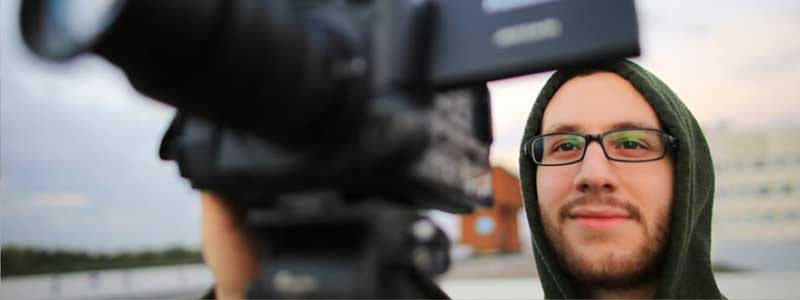Our Latest Recruits Comments On Getting A Job
Working within the video production sector can be hard work but it’s also very enjoyable and rewarding. You will work on a wide variety of projects and possibly travel to various exciting locations to do so. It’s therefore no surprise that a lot of people would like to work in the industry. We get dozens of letters and application each week from graduates and professionals looking for work. So we’ve asked one of our new recruits Richard Willis to share his thoughts and experiences about how to get into the industry to help anyone looking to make that step. Here’s what he came up with;
“Finding work within the production industry isn’t easy. You have to be tenacious, determined, hard working, enthusiastic and above all, passionate. It is something you really have to stick with, but in time it will pay off. Here’s a few a pointers that I think we will help you along the way.”
Skill Set
“In today’s world it isn’t simply enough to just be a cameraman, or a director, or an editor. You have to have multiple skills under your belt to help you stand out from the crowd. A young cameraman who doesn’t know how to edit may struggle, likewise an editor who can’t produce basic motion graphics, or a director who can’t produce. Clients and employers now expect you to offer a bigger skill package.
“So the key thing is to never become complacent with your skill set, always look on expanding it and developing new skills to help you become invaluable to a production company.”
Build Up Your CV & Showreel
“It is important that you have an impressive CV or showreel. Production companies get inundated with applications everyday, and there just isn’t enough hours in the day for them to fully view each one. So it is vital to have something at the very beginning of your showreel/CV that will immediately grab their attention and will make them want to keep reading/watching.
“It’s also important to keep building up your experience. So in your spare time volunteer for projects, not only can you add them to your C.V. but there is a good chance that you will make connections that can lead to future work. So be active, make your own projects and impress people.”
Our new recruit Richard hard at work.
Put yourself out there
“Determination is key, you shouldn’t be afraid of sending out emails to every company, giving them phone calls and making yourself known. That being said there is a fine line between reminding a company about you and hassling them, you don’t want to be constantly ringing them up every day.
“Create an online presence for yourself, websites such as Linkedin, Facebook, Vimeo, Pinterest and Google+ are all tools at your disposal to help you stand out to find new contacts and work.
“Another essential thing is to network, make friends with like minded people and stay in touch with important contacts that you meet, there’s a saying “it’s not what you know, but who you know.” and this can be very true.”
Make it personal
“When contacting companies make sure you personalize your approach and whatever you do don’t send out a group email, you’ll have only a very slim chance that anyone would ever look at it. Your emails should feel personal, mention their name and something about them if you can. Also make sure that your grammar and sentencing are correct. This is unbelievably important.
“Hopefully some of these tips will help you find your way out there.
“Good luck!”
Richard.
To find out more about us and our services, please click here.










Recent Comments